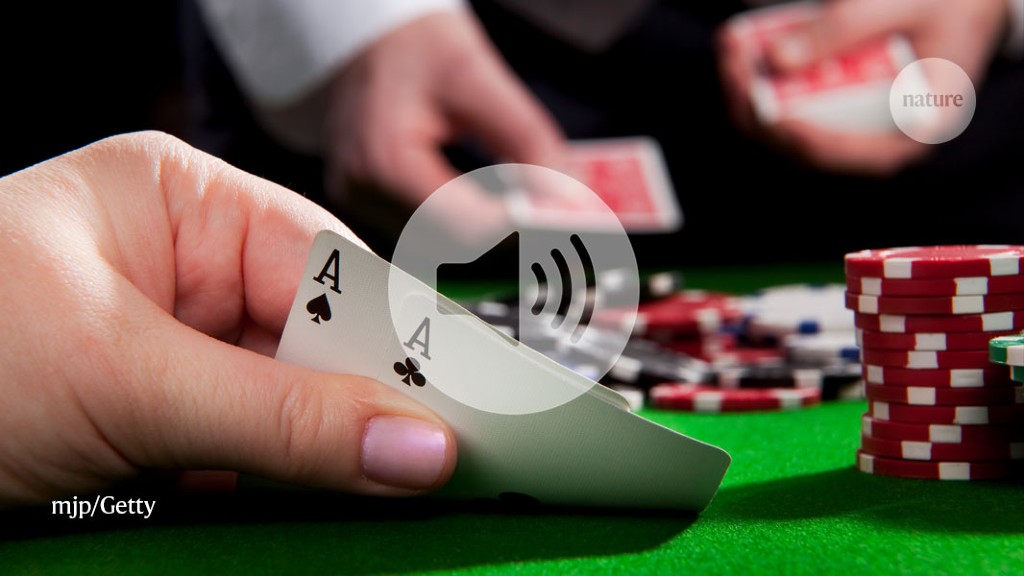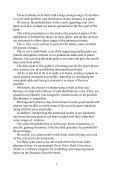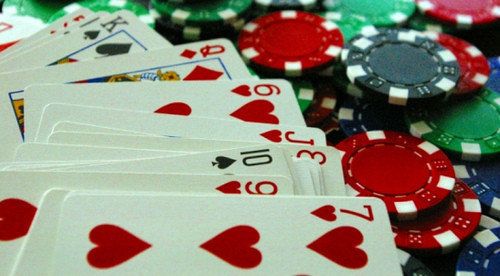Probability Theory Poker
The market for uncertified physicians was not very big in 16th-century Italy. So when a young Girolamo Cardano found himself without a College membership or cash, he did what any reasonable person would do: he became a professional gambler.
- Probability Theory Power System Reliability
- Probability Theory Practice
- Probability Theory Pierre De Fermat
- Probability Theory Probability
- Probability Theory Poker Rules
Over his career, Cardano meticulously documented observations about the games he played. Specifically, he identified patterns that corresponded to wins and losses. Cardano’s observations – outlined in his work “Book on Games of Chance” – form the basis for what we now call mathematical probability.
Poker problems are very common in probability, and are harder than the simple question types mentioned above. The most common type of poker question involves choosing a five cards from the pack and asking the student to find the probability of a certain arrangement, called a poker hand. The most common arrangements are discussed in this section.
- Although poker contains elements of randomness and gambling, there is a substantial amount of skill involved in understanding probability and game theory. Poker strategy typically involves an application of these concepts to improve one's chance of winning. Over the long run of rounds and games, higher skilled players tend to win more.
- That occur in the game of poker. The analysis of models of poker has a long and distin-guished existence in the game theory literature. Chapter 5 of the book of Emile Borel,´ Applications aux jeux de hasard (1938), and Chapter 19 of the seminal book on game theory by von Neumann and Morgenstern (1944) are devoted to the topic.
Knowledge of probability allowed Cardano to earn a steady income from gambling, and professional gamblers today rely on probability to make winning bets. I doubt there’s one WSOP winner alive who lacks at least a basic understanding of probability.
Probability is the tool that allows us to win money at poker. So let’s take a look at how poker probability works, and learn how to apply it to our game. We also welcome you to check out our remaining 3 parts to this 4-part series on probability, which can be found below:
What Is Probability?
Probability Theory Power System Reliability
As a field of mathematics, probability is the study of uncertain events. What’s the chance that it will rain tomorrow? How likely am I to get an A on this test? If you’re dealt AA preflop, how often will you win the hand? The field of probability helps us to answer these questions.
When we obtain an answer to a question of chance, it’s called a probability. For example the probability of seeing rain tomorrow might be 50%. Half the time it will rain, and half the time it won’t.
In poker, probabilities help us to estimate the likelihood of certain events happening. For example the probability of getting aces in the hole is 1/221, or 0.45%. Knowing this particular probability helps us to guide our hand selection at the tables. More importantly, it helps us to guess our opponent’s hand distributions with stunning accuracy.
Representing Poker Probability
There are three main ways to express a probability:
• As a decimal (e.g. 0.03)
• As a percentage (e.g. 3%)
• As a fraction (e.g. 3/100)
All of the above expressions mean the exact same thing, they’re just written in different forms. How you choose to express probabilities boils down to personal preference.
On forum discussions and in poker strategy articles, you’ll most often see poker probabilities in percentage or fraction form. For example, the chance of As-2d winning against a random hand can be expressed as:
• 54.93% in percentage form
• 54.93/100 in fraction form
In mathematical calculations, we’ll most often use decimal form. It’s just easier to write that way, since calculators most often return decimal values. For example the expected value of going all-in against one opponent for $1 with As-2d is:

= $win* Pwin – $cost
= $2(0.5393) – $1
= $0.0786
Probabilities in Plain English
Probability Theory Practice
All these numbers can seem confusing at first. But if you start thinking about probabilities in plain English, you’ll eventually develop an intuition for what they are. That’s especially helpful with poker probabilities, where you often have to calculate them on the fly.
For example, say we have an event A with the probability P(A) = 1/52. This just means that for every 52 events, we can expect event A to happen exactly once. Said differently, event A will happen once per 52 cycles.
Numerator: # of times the event occurs
Denominator: # of iterations
Numerator / Denominator = Probability
Every probability has this same basic format, which means you can convert them easily to English descriptions. Try converting these example probabilities into plain-English descriptions yourself:
1. P(Dealt Aces) = 1 / 221
2. P(Aces Win Against Random Opponent) = 85.20 / 100
3. P(Kings Make Set on Flop) = 1 / 8.5
Check your answers at the bottom of the article.
How Does Probability Help With Poker Strategy?
Probability is useful in almost every aspect of poker strategy. To name just a few examples, probability can:
1. Tell us the likelihood of an opponent holding certain hands, given our reads and her actions.
2. Tell us how often we’ll be dealt strong vs. weak hands.
3. Tell us how often our strong hands or draws will win by showdown.
In the first case, we can transform our reads into mathematical evaluations of poker situations. This general process is called building a hand range, which is a probability distribution of an opponent’s possible holdings.
Once we calculate an opponent’s range, we can analyze the probability of our own holding’s winning against said range. And with that information, we can calculate the average earnings we’ll expect to make by betting, checking, calling, or folding. This allows us to play profitably 100% of the time, as long as we’re mentally sharp. Obviously this is a huge advantage when we’re trying to win at poker.
In the second case, we can figure out how long we’ll have to wait for good hands preflop. This information tells us how often we should expect to play with a card advantage against opponents. From this we can deduce how often we should be raising, folding, and calling preflop. Even better, we can deduce how often an opponent should be raising, calling, and folding; and then we can exploit our opponent’s strategy, depending on how weak or strong is action range actually is.
In the third case, we can calculate the profitability of playing an unmade hand. For example we might have one card to a flush on the turn facing an opponent’s bet. Probability can tell us how likely we are to make our flush. Using this probability, we can calculate our expected value: the exact dollar amount we’d expect to win by making the call. Once we’ve got this information, we’re absolutely certain whether or not a call is profitable in the long run!
Answers to Exercises
1. We’ll get aces once per 221 deals.
2. Our aces will win 82.20 times per 100 hands.
3. Our kings will flop a set once every 8.5 hands.
#1 Editor's Choice All-in-One Gambling Site: BetOnline.ag
BetOnline.ag is one of the most reputable online poker sites that still cater to United States players and ALL grinders worldwide. Claim your 100% poker bonus and/or FREE $25 sports bet!
- New players can earn up to $1,000 in bonus cash on their 1st deposit.
- Ridiculously crisp software and graphics - no lag whatsoever online or on your mobile device.
- Super easy to deposit on - #1 credit card acceptance rate ANYWHERE; Cryptocurrency also accepted!
- 24/7 live support, VERY FAST payout speeds and built-in sportsbook and casino.
- $25 FREE BET available and other perks you can use at their online or LIVE DEALER casino.
EDITOR'S NOTE: BetOnline welcomes players from ALL 50 states and from ALL OVER THE WORLD w/ limited restrictions.
The main underpinning of poker is math – it is essential. For every decision you make, while factors such as psychology have a part to play, math is the key element.
In this lesson we’re going to give an overview of probability and how it relates to poker. This will include the probability of being dealt certain hands and how often they’re likely to win. We’ll also cover how to calculating your odds and outs, in addition to introducing you to the concept of pot odds. And finally we’ll take a look at how an understanding of the math will help you to remain emotional stable at the poker table and why you should focus on decisions, not results.
What is Probability?
Probability is the branch of mathematics that deals with the likelihood that one outcome or another will occur. For instance, a coin flip has two possible outcomes: heads or tails. The probability that a flipped coin will land heads is 50% (one outcome out of the two); the same goes for tails.

Probability and Cards
When dealing with a deck of cards the number of possible outcomes is clearly much greater than the coin example. Each poker deck has fifty-two cards, each designated by one of four suits (clubs, diamonds, hearts and spades) and one of thirteen ranks (the numbers two through ten, Jack, Queen, King, and Ace). Therefore, the odds of getting any Ace as your first card are 1 in 13 (7.7%), while the odds of getting any spade as your first card are 1 in 4 (25%).
Unlike coins, cards are said to have “memory”: every card dealt changes the makeup of the deck. For example, if you receive an Ace as your first card, only three other Aces are left among the remaining fifty-one cards. Therefore, the odds of receiving another Ace are 3 in 51 (5.9%), much less than the odds were before you received the first Ace.
Want to see how poker math intertwines with psychology and strategy to give you a MASSIVE EDGE at the tables? Check out CORE and learn poker in the quickest and most systematic way:
Pre-flop Probabilities: Pocket Pairs
In order to find the odds of getting dealt a pair of Aces, we multiply the probabilities of receiving each card:
(4/52) x (3/51) = (12/2652) = (1/221) ≈ 0.45%.
To put this in perspective, if you’re playing poker at your local casino and are dealt 30 hands per hour, you can expect to receive pocket Aces an average of once every 7.5 hours.
The odds of receiving any of the thirteen possible pocket pairs (twos up to Aces) is:
(13/221) = (1/17) ≈ 5.9%.
In contrast, you can expect to receive any pocket pair once every 35 minutes on average.
Pre-Flop Probabilities: Hand vs. Hand
Players don’t play poker in a vacuum; each player’s hand must measure up against his opponent’s, especially if a player goes all-in before the flop.
Here are some sample probabilities for most pre-flop situations:
Post-Flop Probabilities: Improving Your Hand
Now let’s look at the chances of certain events occurring when playing certain starting hands. The following table lists some interesting and valuable hold’em math:
Many beginners to poker overvalue certain starting hands, such as suited cards. As you can see, suited cards don’t make flushes very often. Likewise, pairs only make a set on the flop 12% of the time, which is why small pairs are not always profitable.
PDF Chart
We have created a poker math and probability PDF chart (link opens in a new window) which lists a variety of probabilities and odds for many of the common events in Texas hold ‘em. This chart includes the two tables above in addition to various starting hand probabilities and common pre-flop match-ups. You’ll need to have Adobe Acrobat installed to be able to view the chart, but this is freely installed on most computers by default. We recommend you print the chart and use it as a source of reference.
Odds and Outs
If you do see a flop, you will also need to know what the odds are of either you or your opponent improving a hand. In poker terminology, an “out” is any card that will improve a player’s hand after the flop.
One common occurrence is when a player holds two suited cards and two cards of the same suit appear on the flop. The player has four cards to a flush and needs one of the remaining nine cards of that suit to complete the hand. In the case of a “four-flush”, the player has nine “outs” to make his flush.
A useful shortcut to calculating the odds of completing a hand from a number of outs is the “rule of four and two”. The player counts the number of cards that will improve his hand, and then multiplies that number by four to calculate his probability of catching that card on either the turn or the river. If the player misses his draw on the turn, he multiplies his outs by two to find his probability of filling his hand on the river.
In the example of the four-flush, the player’s probability of filling the flush is approximately 36% after the flop (9 outs x 4) and 18% after the turn (9 outs x 2).
Pot Odds
Another important concept in calculating odds and probabilities is pot odds. Pot odds are the proportion of the next bet in relation to the size of the pot.
For instance, if the pot is $90 and the player must call a $10 bet to continue playing the hand, he is getting 9 to 1 (90 to 10) pot odds. If he calls, the new pot is now $100 and his $10 call makes up 10% of the new pot.
Experienced players compare the pot odds to the odds of improving their hand. If the pot odds are higher than the odds of improving the hand, the expert player will call the bet; if not, the player will fold. This calculation ties into the concept of expected value, which we will explore in a later lesson.
Bad Beats
A “bad beat” happens when a player completes a hand that started out with a very low probability of success. Experts in probability understand the idea that, just because an event is highly unlikely, the low likelihood does not make it completely impossible.
A measure of a player’s experience and maturity is how he handles bad beats. In fact, many experienced poker players subscribe to the idea that bad beats are the reason that many inferior players stay in the game. Bad poker players often mistake their good fortune for skill and continue to make the same mistakes, which the more capable players use against them.

Decisions, Not Results
One of the most important reasons that novice players should understand how probability functions at the poker table is so that they can make the best decisions during a hand. While fluctuations in probability (luck) will happen from hand to hand, the best poker players understand that skill, discipline and patience are the keys to success at the tables.
A big part of strong decision making is understanding how often you should be betting, raising, and applying pressure.
The good news is that there is a simple system, with powerful shortcuts & rules, that you can begin using this week. Rooted in GTO, but simplified so that you can implement it at the tables, The One Percent gives you the ultimate gameplan.
This 7+ hour course gives you applicable rules for continuation betting, barreling, raising, and easy ratios so that you ALWAYS have the right number of bluffing combos. Take the guesswork out of your strategy, and begin playing like the top-1%.
Conclusion
A strong knowledge of poker math and probabilities will help you adjust your strategies and tactics during the game, as well as giving you reasonable expectations of potential outcomes and the emotional stability to keep playing intelligent, aggressive poker.
Remember that the foundation upon which to build an imposing knowledge of hold’em starts and ends with the math. I’ll end this lesson by simply saying…. the math is essential.
Related Lessons
By Gerald Hanks
Probability Theory Pierre De Fermat
Gerald Hanks is from Houston Texas, and has been playing poker since 2002. He has played cash games and no-limit hold’em tournaments at live venues all over the United States.